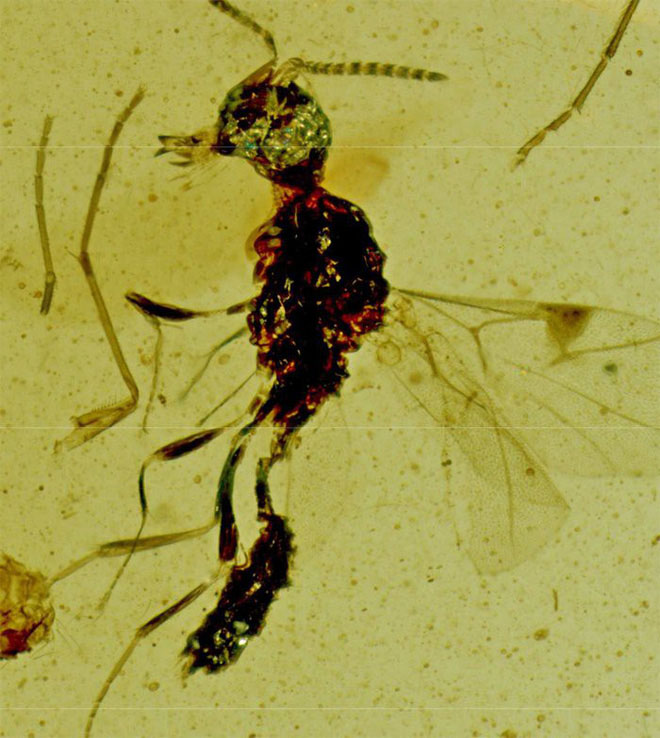This wasp was named after Dracula for an unexpected reason
Scientists have named this unprecedented specimen the name of the most famous blood sucker in human history, Dracula.
This tiny "winged demon" (only 2.5mm long) is a clear example of the Cretaceous wasp, belonging to the Serphitoidea super-family. Only two families make up this group of organisms, namely Serphitidae and Archaeoserphitidae . But the little family tree of the beetle we're talking about here doesn't belong to both groups, biologically.
Based on a table comparing key characteristics, paleontologist Alexandr Rasnitsyn from the Russian Academy of Sciences and Christoph Ohm-Kuhnle from Tubingen University determined that perhaps it would be best to place it in the Serphitidae family.
But when considering the number of beard sections, wing designs, jaws and antennae on both sides of its mouth, paleontologists find that a new classification category must be established.
And so they set up a new family called Supraserphitinae, consisting of only one creature with a haunting long jaw called Supraserphites draculi ! Just look at the picture below, you find it scary?

Looking at the image above, do you find it scary?
The way he used his vampire-like mouth and the beard dangling from it was unknown, but it certainly wasn't for an odd blood-sucking ritual like movies or portrayals.
If we look at the other members of the Serphitoidea super family, we might have a clue. Described as a parasite, this wasp spawns an egg in the host, so that when their larvae hatch, there will be a nutritious meal waiting.
It's not like the undead transforms the host into a new mystical creature after a night's sleep, but in the animal world, it is unknown to let the newborn kids gnaw on the body of a victim. to escape seems to be . disgusting.
The amber-covered blocks of stone containing this Dracula wasps are dated to under 100 million years. This wasp was probably locked in amber at least 270 million years ago.
This strange discovery helps us better understand the geographical history of Southeast Asia.
The amber piece contains a wasp which was excavated from a mine in Hukawng Valley, Myanmar, an area known for its beautifully preserved fossils, including a prehistoric bee that has the oldest date ever. known.
Along with a series of unique insects caught in the amber at the same time as the strange wasp, the distinct evolutionary features of S. draculi show that its ecosystem has been isolated. a long time.
Finally, the wasp specimen that paleontologists obtained belongs to females, so giving it a male name like Dracula is a bit paradoxical?
- New discovery about the tomb of Dracula
- Horror method to repel cancer, heart disease Dracula type
- WASP-43b - New terrifying planet than hell
- The ghastly crimes of the prince
- New discovery about the giant hot planet WASP-12b
- The ant species has a function
- The hottest and fastest planet
- The tiny battle between cockroaches and wasps and the unexpected ending
- The atmosphere melted iron on the planet twice as large as Jupiter
- The new creature is named after Donald Trump for an unexpected reason
- Detecting water in a strange planet's atmosphere
- Discovering the planet has three times the amount of Saturn
 Discovered an ancient centipede fossil 99 million years old
Discovered an ancient centipede fossil 99 million years old Discovered bat-like dinosaurs in China
Discovered bat-like dinosaurs in China Discovered a 200-year-old bronze cannon of the coast
Discovered a 200-year-old bronze cannon of the coast Discover 305 million-year-old spider fossils
Discover 305 million-year-old spider fossils